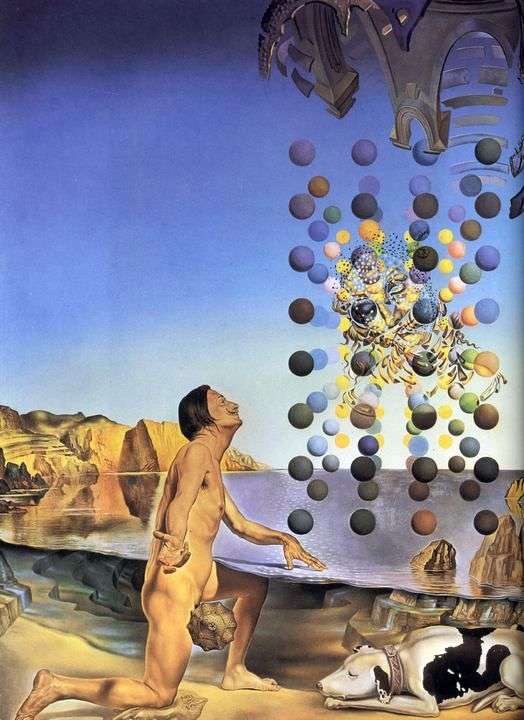
“Naked Dali, contemplating the five ordered bodies, turning into corpuscles, from which suddenly Leda Leonardo, fertilized by the face of Gala, is created,” the description of the picture
The seascape, a cloudless clear day and the yellow rocks of Cadaques are a typical canvas on which Dali captured his bizarre fantasies. The surface of the sea water is almost perfectly flat. Only a slight ripple wrinkles her. Yes, and that is caused, rather, not by the blow of the wind, but by the hands of Dali, who raised the sea like a veil, casually tossing it onto his bent knee. Water submissively retreats, exposing the seabed. It steps down, revealing to the viewer the secrets of the depths.
Dali portrayed himself as naked, standing on one knee and looking intently at the composition, created in the air under his gaze. At his feet he sleeps, his head pawing, a big piebald dog. The right upper corner of the canvas is occupied by an openwork vaulted structure, a sort of castle or gazebo. Its details float in the air, not touching each other. Just below the three-dimensional structure of multi-colored balls is suspended. In the center of it from the individual small elements is formed a vague image.
If desired, you can see in it the outline of the painting “Leda and the Swan” by Leonardo da Vinci’s brush and the contours of the face of Gal. The full name of the painting is “Naked Dali, contemplating five ordered bodies, turning into corpuscles, of which Leda Leonardo, who is impregnated by the face of Gala, suddenly creates.” Dali is the master of double and triple illusions, when one image is hidden in the other. Images are hidden and appear, it is worth to the viewer to change the angle of view or move a couple of steps. The artist himself called this method paranoid-critical. Now this direction of painting is called metamorphic style.
 Atomic Leda by Salvador Dali
Atomic Leda by Salvador Dali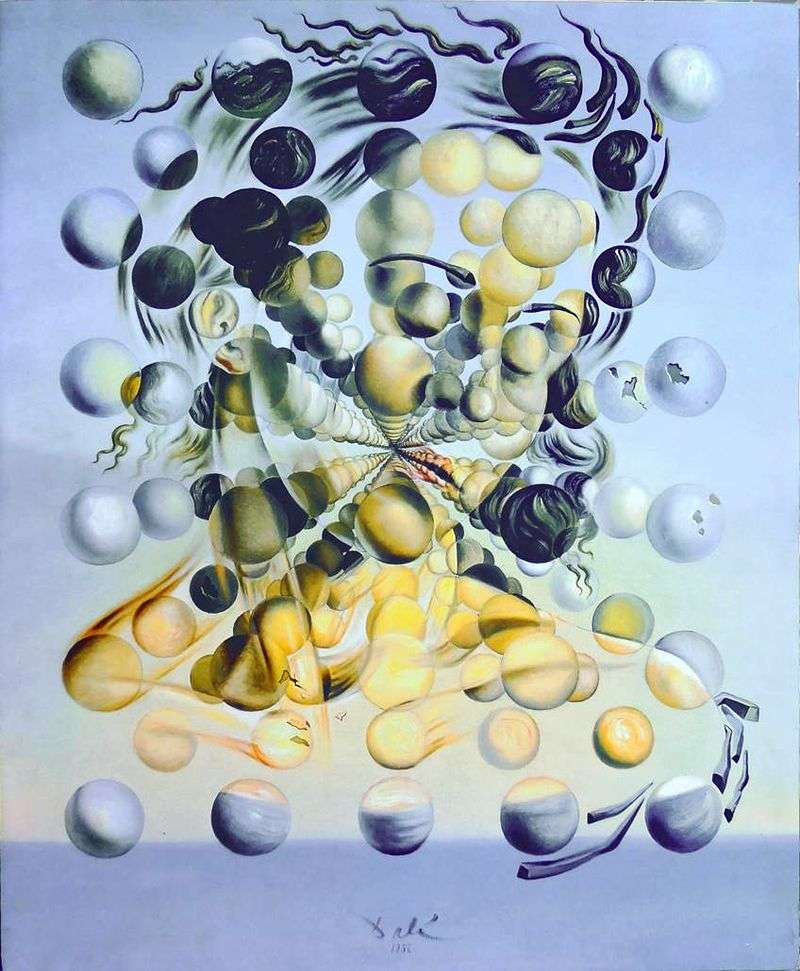 Galatea spheres by Salvador Dali
Galatea spheres by Salvador Dali Galarina by Salvador Dali
Galarina by Salvador Dali My wife, naked, looks at her own body by Salvador Dali
My wife, naked, looks at her own body by Salvador Dali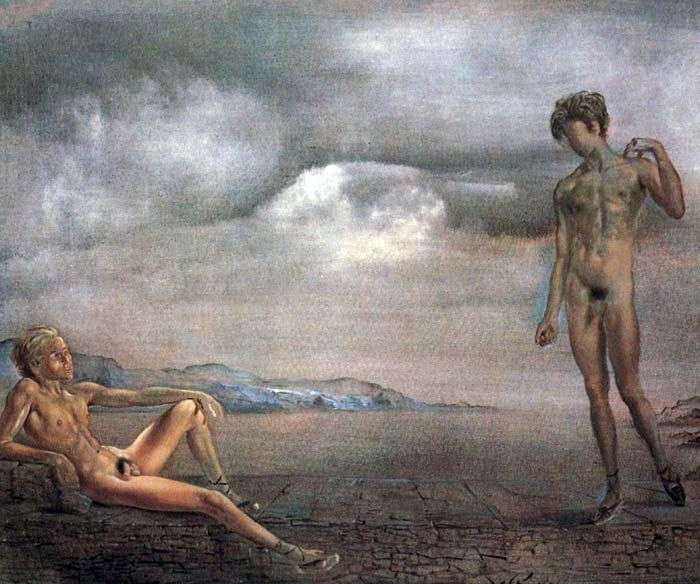 Two adolescents by Salvador Dali
Two adolescents by Salvador Dali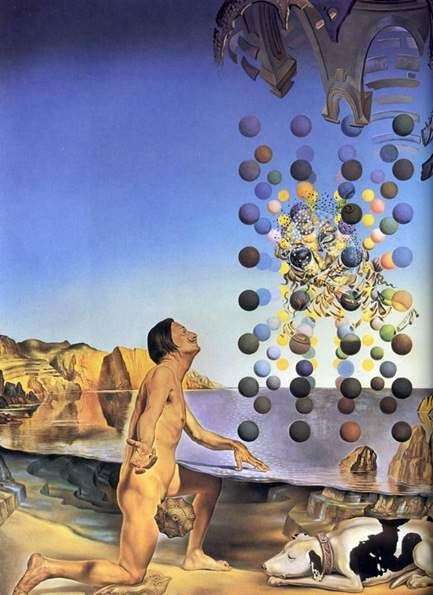 Nagy Dali ante cinco cuerpos regulares – Salvador Dali
Nagy Dali ante cinco cuerpos regulares – Salvador Dali Dali nue devant cinq corps réguliers – Salvador Dali
Dali nue devant cinq corps réguliers – Salvador Dali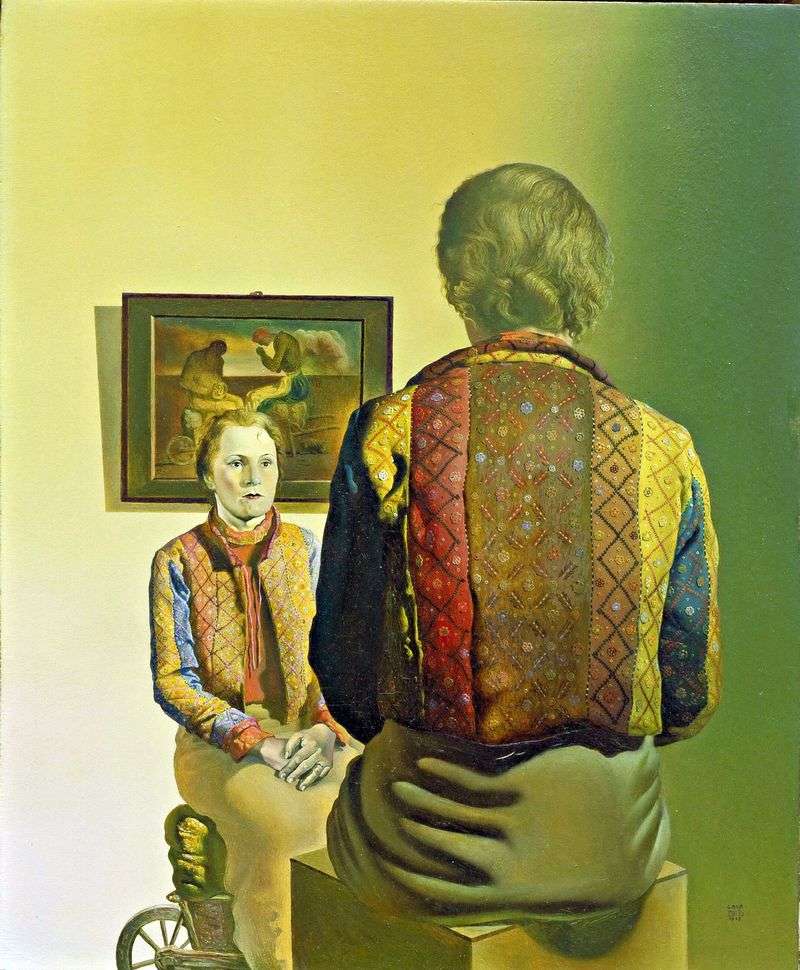 Portrait of Gala by Salvador Dali
Portrait of Gala by Salvador Dali